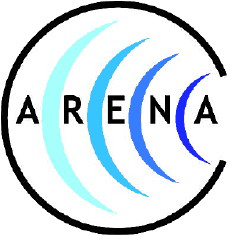Dr
Andreas Horneffer
(Dep. Astrophysics, IMAPP, RU Nijmegen)
29/06/2010 17:00
oral presentation
LOFAR is a new radio telescope that is being built in the Netherlands.
The core of LOFAR will have a high density of antennas, the central "superterp"
with nearly 600 antennas on a circular area of about 400m diameter, and more
stations close by. In addition, the calibration on multiple astronomical objects
will give an excellent calibration with an expected phase error of less than
50...
Dr
maaijke mevius
(kvi)
29/06/2010 17:30
oral presentation
When an ultra-high energy (UHE) neutrino hits the Moon, it initiates an hadronic cascade below the surface. The cascade has a negative charge excess that propagates faster than the local speed of light, producing a short pulse of radio Cherenkov emission. The NuMoon project aims to detect these lunar radio pulses on Earth with low frequency radio telescopes.
The Low Frequency Radio Array...
Olivier Martineau-Huynh
(IN2P3-CAS)
29/06/2010 17:50
oral presentation
The TIANSHAN Radio Experiment for Neutrino Detection (TREND) is a collaboration initiated in 2008 between the Chinese Academy of Science and the French IN2P3. This stand-alone antenna array aims at performing the radio-detection of extensive air shower (EAS) created by high energy neutrinos (>10^16.5 eV).
The TREND experiment is deployed on the site of 21CMA, a giant radio-telescope...
M.
Robert Mutel
(University of Iowa)
29/06/2010 18:20
oral presentation
R.L. Mutel, T. R. Jager, K. G. Gayley
University of Iowa
We present new flux limits for UHE neutrinos derived from radio searches using a lunar target. The RESUN search used three 4-antenna sub-arrays of the Expanded Very Large Array at an observing frequency of 1.4~GHz to search for short duration Cerenkov emission from the lunar limb. Each antenna’s down-converted waveform was sampled...
Dr
Nectaria Gizani
(Hellenic Open University, School of Science and Technology)
29/06/2010 18:40
oral presentation
We are looking for radio `relics' and `halos' in an X-ray selected sample of clusters of galaxies. Most galaxy clusters have cool cores with AGN (Active Galactic Nuclei) at their centre. These AGN contain particle bubbles that show non-thermal radio emission. The presence of `radio relics και halos' observed at the periphery of the cluster radio structure could be explained if the bubbles can...

